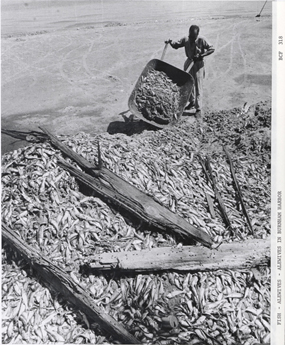I inadvertently started humming a song from 1905 as I was reading Dan Egan’s new book, The Death and Life of the Great Lakes. (Check out a recent interview with Dan on MPR News with Tom Weber.)
School kids in Ohio (and probably New York) were taught this song that documents the experience of delivering goods by the fastest way possible at the time—canal boat. Here’s the ear worm for you.
I’ve got an old mule and her name is Sal
Fifteen years on the Erie Canal
She’s a good old worker and a good old pal
Fifteen years on the Erie Canal
We’ve hauled some barges in our day
Filled with lumber, coal, and hay
And every inch of the way we know
From Albany to Buffalo….
There’s a Bruce Springsteen version that might have made it much cooler, but that was after my time.
The hey-day of the canal system was brief. However, in this attempt to open up the Midwest to Atlantic markets, we inadvertently impacted the Great Lakes ecosystem from the top of the food chain to the bottom in ways that are still unfolding. The lakes are forever changed.
The top predator fish in the Great Lakes—lake trout—were decimated by the invasive and spectacularly ugly sea lamprey. The cry of “lamprey” by a swimmer where I lifeguarded on Lake Erie could clear the water faster than any whistle. Kids knew that they attached to almost anything moving through the water and sucked the blood out. Worse than leeches.
Massive schools of the invasive salt-water herring called alewives had short-lived population explosions followed by wholesale die-offs. The worst die-off in Chicago in 1967 created a huge disposal problem, not to mention an awful smell. Just the memory of it made the people I worked with on the beaches of Lake Michigan anxious at certain times of year.
 Even Lake Erie’s recent issue with toxic blue-green algae in Toledo’s drinking water can be traced back to the changes wrought by the opening of the Great Lakes to waters and biota from elsewhere. It’s so 1970s for Lake Erie to turn toxic and green (like the shades and the Princess Leia hair-do.)
Even Lake Erie’s recent issue with toxic blue-green algae in Toledo’s drinking water can be traced back to the changes wrought by the opening of the Great Lakes to waters and biota from elsewhere. It’s so 1970s for Lake Erie to turn toxic and green (like the shades and the Princess Leia hair-do.)
With our modern perspective we can smugly say they should have figured out that canals were only going to be economically viable for a short time. But if we are honest, we can see how our choices for economic prosperity can blind us to unintended impacts on water resources.
What are we doing that will make people generations from now shake their heads? What would make the list for the short-term-gains-for-long-term -havoc award? Extra points for anyone who comes up with a better name for the award.
- Over-salting our roadways? Salt is toxic and builds up in lakes and our drinking water. Salting the earth was done in the ancient Near East and during the Middle Ages to conquered cities to curse their re-inhabitation. Are we cursing our own rivers and lakes so that we can drive fast in winter?
- Crude oil leaks? A pipeline in Bemidji in 1979 that released 100,000 gallons into the ground is still being studied 40 years later. The oil and its degradants continue to move into the aquifer and vapors are emitted from the soil. It’s not going away anytime soon.
- Millions of tons of nitrogen fertilizer applied to agricultural fields for increased yields, some of which invariably leaches away? The result is water we can’t drink and crops we can’t sell.
Look into your crystal ball and tell me what’s on your list.
— Carrie Jennings, research and policy director


